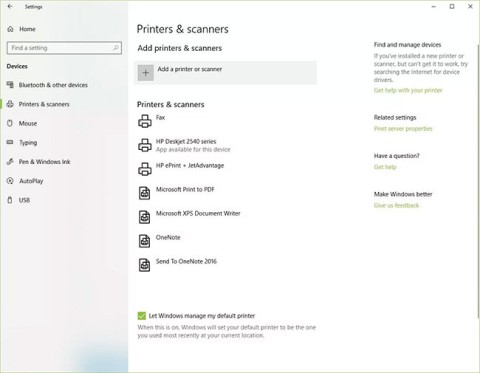The Best Diets for Heart Health

In addition to regular exercise and not smoking, diet is one of the best ways to protect your heart. Here are the best diets for heart health.
Python is an increasingly popular programming language, and is also the most commonly chosen language for teaching beginners to code.
Python is completely dynamically typed and uses automatic memory allocation; hence it is similar to Perl, Ruby, Scheme, Smalltalk, and Tcl. Python was developed in an open source project, managed by the non-profit Python Software Foundation.
According to the assessment of Eric S. Raymond, Python is a language with a very clear form, clear structure, and convenience for newcomers to programming. Python's structure also allows the user to write code with a minimum of keystrokes.
Initially, Python was developed to run on Unix. But then over time, it "expanded" to all operating systems from MS-DOS to Mac OS, OS/2, Windows, Linux, and other operating systems belonging to the Unix family.

| Feature | Description |
|---|---|
| Enhanced Typing System | Introduces new typing syntax and improvements for type hints, making code more readable and maintainable. |
| Performance Optimizations | Significant speed improvements in execution time for various built-in functions and libraries. |
| New Libraries | Inclusion of additional libraries that support machine learning and data science, expanding Python's usage in those fields. |
| Improved Error Messages | Error messages are now more descriptive and beginner-friendly, aiding new developers in debugging their code. |
Python's popularity stems from its versatility and ease of use. Here are some reasons why you should consider learning Python:
For those interested in the latest changes in programming, staying updated with Python's development is crucial as it continues to adapt and grow, keeping pace with technological advancements.
In addition to regular exercise and not smoking, diet is one of the best ways to protect your heart. Here are the best diets for heart health.
Diet is important to our health. Yet most of our meals are lacking in these six important nutrients.
At first glance, AirPods look just like any other true wireless earbuds. But that all changed when a few little-known features were discovered.
In this article, we will guide you how to regain access to your hard drive when it fails. Let's follow along!
Dental floss is a common tool for cleaning teeth, however, not everyone knows how to use it properly. Below are instructions on how to use dental floss to clean teeth effectively.
Building muscle takes time and the right training, but its something anyone can do. Heres how to build muscle, according to experts.
The third trimester is often the most difficult time to sleep during pregnancy. Here are some ways to treat insomnia in the third trimester.
There are many ways to lose weight without changing anything in your diet. Here are some scientifically proven automatic weight loss or calorie-burning methods that anyone can use.
Apple has introduced iOS 26 – a major update with a brand new frosted glass design, smarter experiences, and improvements to familiar apps.
Yoga can provide many health benefits, including better sleep. Because yoga can be relaxing and restorative, its a great way to beat insomnia after a busy day.
The flower of the other shore is a unique flower, carrying many unique meanings. So what is the flower of the other shore, is the flower of the other shore real, what is the meaning and legend of the flower of the other shore?
Craving for snacks but afraid of gaining weight? Dont worry, lets explore together many types of weight loss snacks that are high in fiber, low in calories without making you try to starve yourself.
Prioritizing a consistent sleep schedule and evening routine can help improve the quality of your sleep. Heres what you need to know to stop tossing and turning at night.
Adding a printer to Windows 10 is simple, although the process for wired devices will be different than for wireless devices.
You want to have a beautiful, shiny, healthy nail quickly. The simple tips for beautiful nails below will be useful for you.













